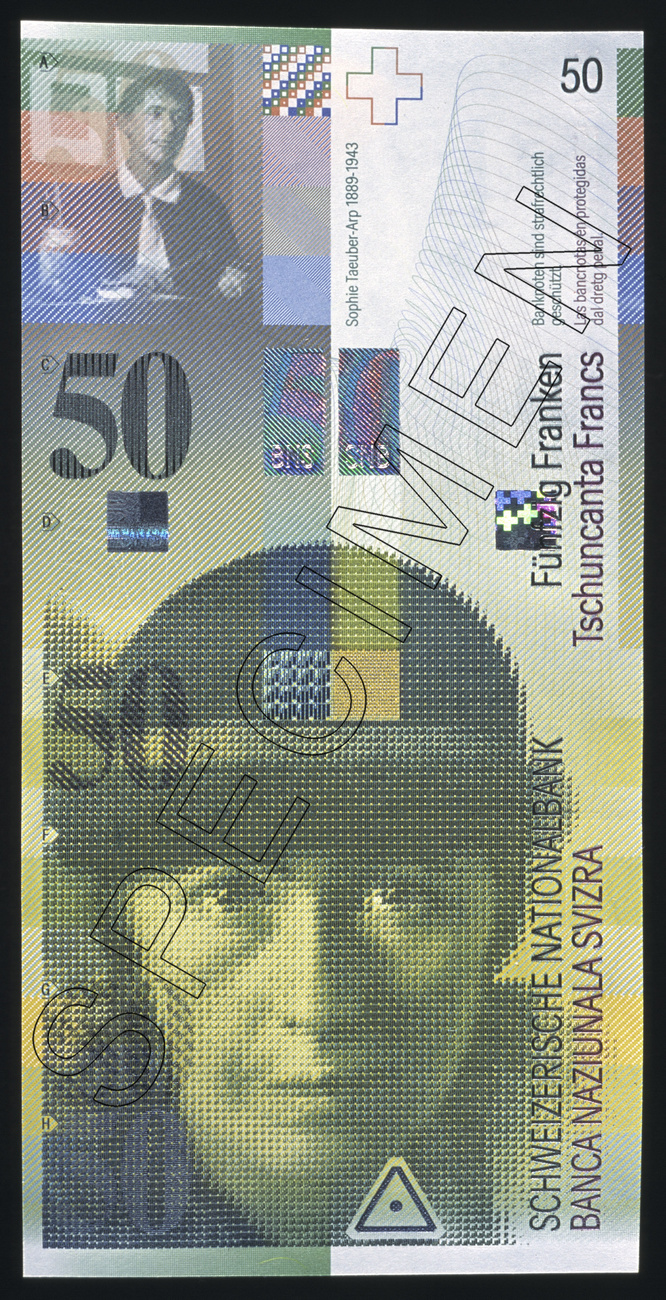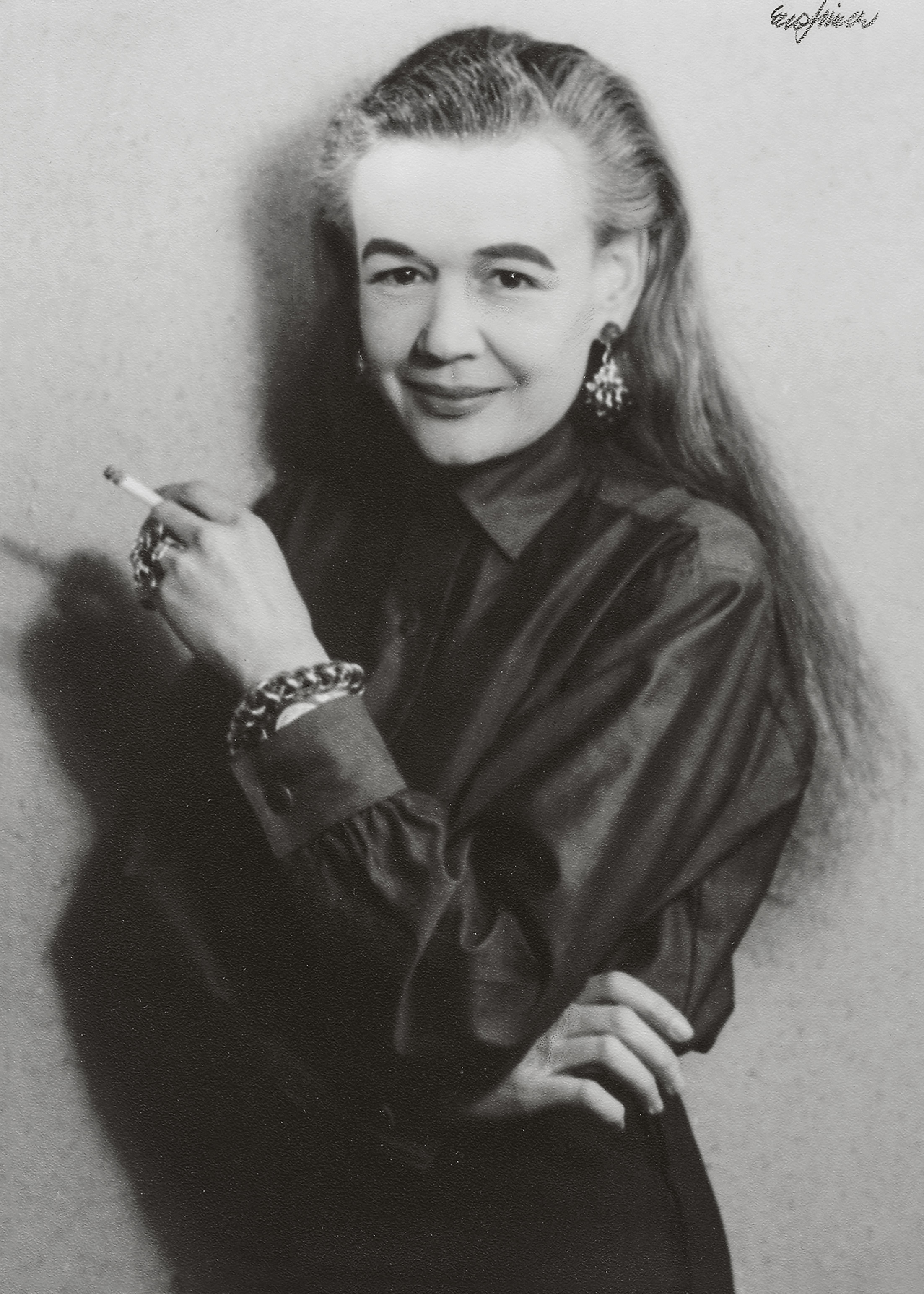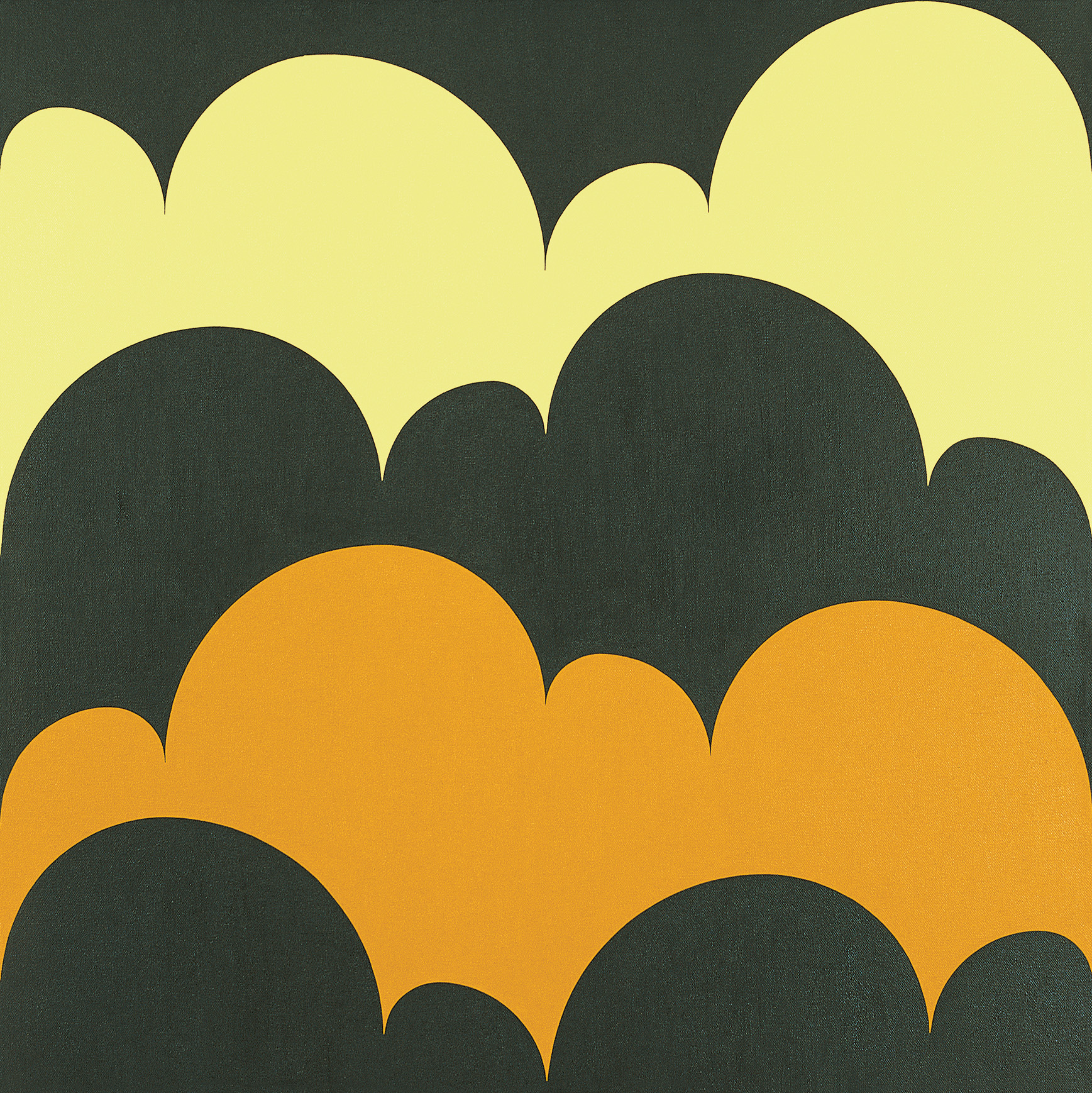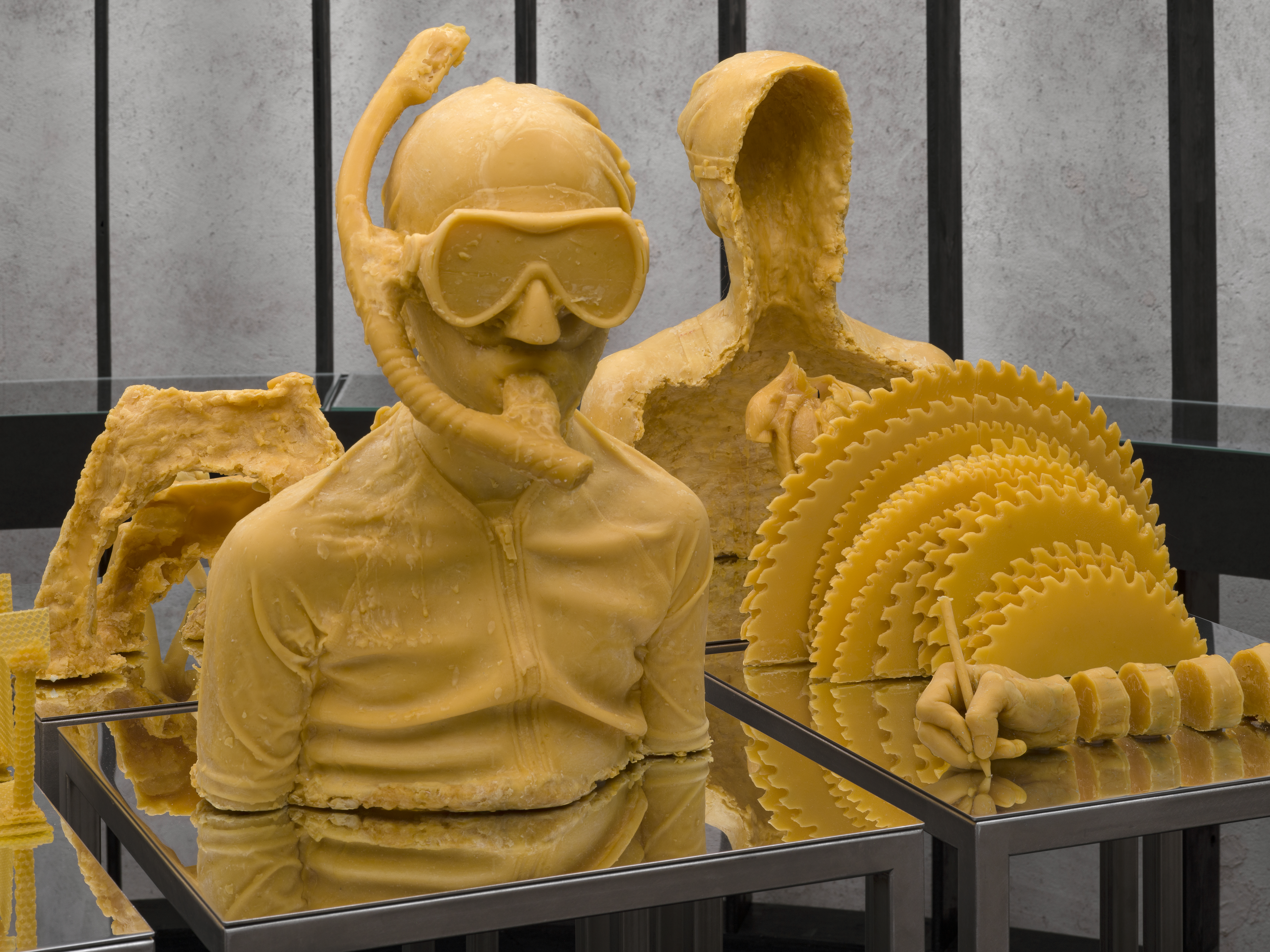
From Dada to Concrete Art: when Zurich was a modernist battleground

A new book about the pioneers of Concretism fills a gap in the history of the most internationally influential Swiss art movement of the 20th century. Its co-author, Thomas Haemmerli, explains how the book also acknowledges the art form’s contribution to the rise of the world-renowned Swiss school of graphic design.
Thomas Haemmerli confesses that he used to hate concrete art. Born in 1964, Haemmerli belongs to the generation of radical young people who stormed the streets of Zurich in the late 1970s and early 1980s – Switzerland’s delayed answer to the youth revolutions that shook much of the rest of the world in the 1960s.
Times changed, and today the former activist is known as a humorous documentary film-maker. Together with the art critic Brigitte Ulmer, he is also the author of Circle! Square! Progress! Zurich’s Concrete Avant-Garde, a comprehensive reassessment of Switzerland’s most influential 20th-century movement in arts and design, whose impact still resonates in contemporary practice.

The movement is most often associated with the polymath artist Max Bill, but his towering profile – thanks in part to his own talent for self-promotion – has overshadowed other significant artists. Ulmer and Haemmerli give equal weight to three of them: Camille Graeser, Verena Loewensberg, and Richard Paul Lohse, thus broadening the scope devoted to the movement.
There is an abundance of literature focusing on details of the movement, but works offering a broader overview are scarce, says Haemmerli, with comprehensive studies published only in Spanish and French. Filling this gap, his and Ulmer’s book is published in both German and English, and its official launch is taking place at the Architecture Association School (AA) in London on November 20. This is fitting: the influence of concrete art, which spread to architecture, typography, photography and especially graphic design, is similar to that of the Bauhaus, where Bill studied in the first half of the last century.

From avant-garde to universal
In addition to the Bauhaus influence, the Concretists adopted the forms, ideas and practices of the De Stijl movement and 1920s Soviet constructivism, blending them into a new artistic direction in neutral Switzerland – just as the Second World War was raging across the rest of Europe.
After the war, Swiss graphic design became world-beating, Haemmerli says. “An old German graphic designer told me that, with the continent destroyed, his colleagues of the same age were mostly dead, or didn’t have schools of applied art to learn and develop their skills, while the schools of applied art in Switzerland were not only good but had survived the war unscathed.”
The founders of the Concretist group, led by Bill, developed artistic guidelines in the spirit of the avant-gardes of the early 20th century. Like the Dada movement, also born in Zurich in 1916, the Concretists sought to challenge bourgeois notions of beauty and good taste.
By the postwar years, their reputation extended to the US, Japan, and Latin America. It wouldn’t take long for the Concretists to become synonymous with the establishment, their art ubiquitous in galleries, then magazines, and finally dentists’ waiting rooms. They also became an object of contempt for younger, more radical generations, such as Haemmerli’s.
>> From the Archives of Swiss public television: the celebration of Max Bill’s 60th birthday at Zurich’s Kunsthaus, 1968.
Criticism from left to right
SWI: Until they reached international fame, the Zurich Concretists were not really appreciated in Zurich.
T.H.: The bourgeois taste of that time loved imitations of classic art and had a notion that good art should be uplifting. So when the Concretists started in the 1930s, they were harshly attacked by the bourgeoisie, which didn’t understand what they were doing.
And then you have fascism. Remember that the Nazis were very serious in their suppression of modern art, culminating in the 1937 exhibition Entartete Kunst (Degenerate art). A big part of the bourgeoisie in Switzerland was sympathetic to this attitude. But criticism also came from the left.
SWI: Do these attitudes reinforce the idea that Switzerland is a very conservative country, both on the right and the left?

T.H.: I would totally agree if you were talking about the workers’ movements being anti-foreigner. But the reaction against modern art was something that united the left all over Europe, both the Stalinists and the Social Democrats.
A good example is a very peculiar novel by a psychiatrist and Social Democrat politician from Zurich published in 1933, Geschmeiss um die ‘Blendlaterne’ (The Bugs Around the Lamp), which is a roman à clef attacking the Dadaists.
The author, Charlot Strasser, really hated them because, he said, they were doing these crazy poems, this crazy art. They were taking drugs. They were foreigners. He even pretended that they were arms dealers.
They were real bohemians, and a big chunk of the workers’ movement was totally against Bohemia. But the Concretists weren’t bohemians at all. Their art puzzled the workers’ movement, which didn’t know what to make of all those squares and circles.
>> From the archives of Swiss public television II: Max Bill explains his works (1968):
SWI: Although Zurich in particular was a stage in the history of Modernism, the city and its elites are still reluctant to accept it as part of its history. It is still not part of the basic curriculum for Swiss schools. Why has this resistance against modern art lingered until today?
T.H.: It’s important to understand that for many decades, Switzerland had this idea of Geistige Landesverteidigung, or “spiritual national defence”, through which Switzerland led an appeasement policy with Nazi Germany. Right after the war, it switched to the Cold War against communism, and these anti-communist and anti-left feelings were very strong until at least 1989.
Dada was a leftist movement, seen as just a footnote in literature, and the Kunsthaus [the Zurich Museum of Fine Arts], which represents the tastes of the local elite, was never interested in the Dada heritage. At the time, nobody knew that art history or history was being made here.
The Zurich bourgeoisie liked Impressionists, but definitely not Dadaists. It would only fall for concrete art when it was already an international brand.

SWI: The Concretists were eminently local Swiss artists while the Dadaists were mostly foreigners who left Switzerland after the war. You argue that Dadaists and Concretists were not totally antagonistic towards each other.
T.H.: This is something that many people don’t agree on. Here in Zurich, we are used to this distinction: on one side, the Dadaists, who were foreigners, were gay, Catholic, partied a lot, were bohemian and took drugs and so on. And on the other side [were] the Concretists, who were Protestant, sober and very rational.
But this distinction was not black and white. Max Bill once wrote a text where he says there were lots of exchanges. The core of the Dadaists were really foreigners, but there were some Swiss people involved. The most important of them was Sophie Taeuber-Arp.

SWI: Why?
T.H.: She was a teacher at the School for Applied Arts, and very early in her career she was already doing geometrical works, not only painted but also woven. At the same time, she danced at Dada soirées. She had to do that in disguise, so as not to risk her job at the school. She was also, for a short time, Max Bill’s teacher.
[The Dutch artist Theo] Van Doesburg, who coined the term ‘concrete art’, was also part of the geometrically inclined De Stijl movement, and he even sometimes used a Dadaist pseudonym. So he was both. And there are many others whose art and attitude weren’t defined by this division.
SWI: You say in your book that Sophie and Hans Arp functioned as a bridge between these two sides. Sophie Taeuber-Arp has recently been ‘rediscovered’. Until a couple of years ago, in the big narrative of Modernism, she was just the wife of Hans Arp. But, as you state, she was much more fundamental in this bridge than Hans Arp.
T.H.: Absolutely! She was much more important and interesting. But in the 1970s, when feminist scholars started to reassess the art of female artists, they had this notion that there is a specific non-male gaze and non-male way of looking at the world. And that it had to be soft and round, etc., and it didn’t have to be too rational.

So lots of female artists working geometrically weren’t integrated in big discovery shows because they were denounced for embracing the enemy. This also happened to Verena Loewensberg. She was viewed as doing this male thing and was not considered a ‘female’ artist.
SWI: But Verena Loewensberg still hasn’t been ‘rediscovered’, has she?
T.H.: I have the impression it’s happening right now. A few months ago, she had a show at Hauser & Wirth’s gallery in New York. And there was an exhibition in Geneva in which she wasn’t presented as a pure Concretist; it showed that her art was much freer and overlapped with Pop art and colour-field painting.
In her lifetime, that was considered her main weakness: Bill once said that she should be ‘cured’ of her subjectivism. But today this weakness turns out to be the strongest point in the valorisation of her art. Loewensberg once said: ‘I have no theory, therefore I’m forced to have ideas’.
SWI: By the time of the 1960s and 1970s counterculture movements, the original core of the Concretists – Lohse, Max Bill, etc. – were already old bourgeois, established artists. She’s the only one of the artists you focused on who was still flowing with the times.
T.H.: Correct. Bill was still very interested in what was going on, and he knew his art hadn’t changed a lot. The same with Lohse, who was quite generous towards younger artists. He knew that once he had found his formula, that was it. Nothing new came after that.

Edited by Catherine Hickley/gw

In compliance with the JTI standards
More: SWI swissinfo.ch certified by the Journalism Trust Initiative





























You can find an overview of ongoing debates with our journalists here . Please join us!
If you want to start a conversation about a topic raised in this article or want to report factual errors, email us at english@swissinfo.ch.